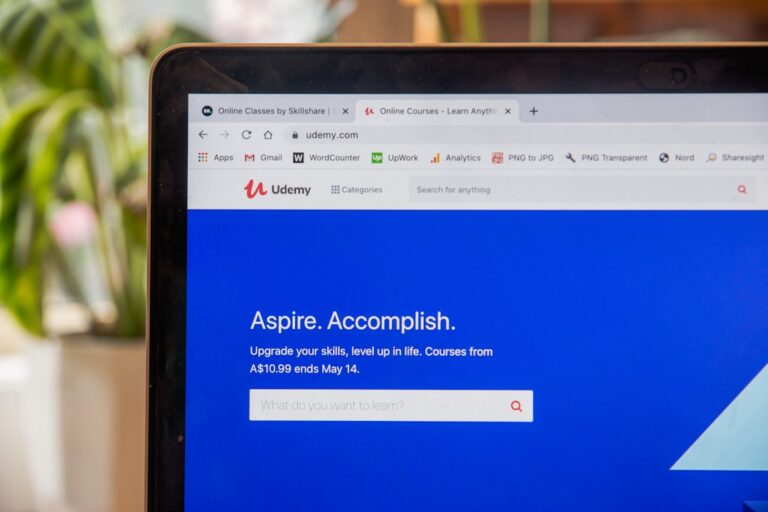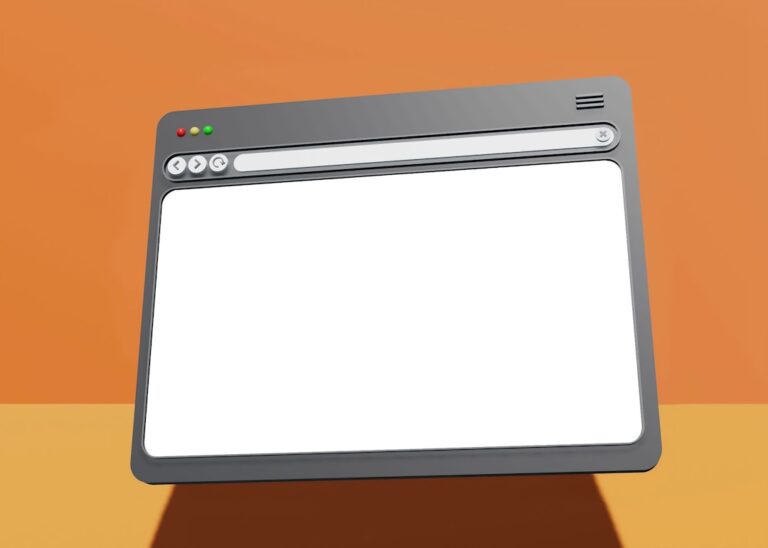Micro-learning is an educational approach that delivers content in small, easily digestible segments, allowing learners to absorb information quickly and efficiently. This method is characterized by its brevity, often consisting of short videos, infographics, quizzes, or brief articles that focus on specific topics or skills. The essence of micro-learning lies in its ability to cater to the fast-paced nature of modern life, where individuals often struggle to find time for lengthy training sessions or extensive reading.
By breaking down complex subjects into bite-sized pieces, micro-learning enhances retention and engagement, making it an increasingly popular choice in both educational and corporate settings. The concept of micro-learning is not entirely new; it has roots in various educational theories that emphasize the importance of spaced repetition and active recall. However, the advent of technology has significantly transformed how micro-learning is delivered.
With the proliferation of smartphones and online platforms, learners can access micro-learning modules anytime and anywhere, making it a flexible solution for busy professionals and students alike. This accessibility has led to a shift in how knowledge is consumed, moving away from traditional classroom settings to more dynamic and interactive learning experiences.
The Benefits of Micro-Learning
One of the primary benefits of micro-learning is its ability to enhance knowledge retention. Research has shown that information presented in smaller chunks is easier for the brain to process and remember. This aligns with cognitive load theory, which posits that our working memory has limited capacity.
By reducing the amount of information presented at one time, micro-learning minimizes cognitive overload, allowing learners to focus on mastering one concept before moving on to the next. This method not only improves retention rates but also fosters a deeper understanding of the material. Another significant advantage of micro-learning is its flexibility and convenience.
In an era where attention spans are dwindling and distractions abound, learners appreciate the ability to engage with content on their own terms. Micro-learning modules can be accessed on various devices, enabling individuals to learn during short breaks or commutes. This adaptability makes it easier for organizations to integrate training into their employees’ daily routines without disrupting productivity.
Furthermore, the modular nature of micro-learning allows for just-in-time learning, where individuals can seek out specific information as needed, rather than waiting for scheduled training sessions.
How Micro-Learning Works

Micro-learning operates on the principle of delivering targeted content that addresses specific learning objectives. Each module is designed to focus on a single concept or skill, which can be completed in a matter of minutes. This targeted approach allows learners to engage with the material actively, often through interactive elements such as quizzes or simulations that reinforce understanding.
For instance, a micro-learning module on customer service might include a short video demonstrating effective communication techniques followed by a quiz that tests the learner’s comprehension of those techniques. The effectiveness of micro-learning is further enhanced by its incorporation of multimedia elements. Visual aids such as infographics and videos can significantly improve engagement and retention compared to text-heavy materials.
Additionally, gamification elements—such as points, badges, or leaderboards—can motivate learners by providing immediate feedback and recognition for their efforts. This combination of interactivity and multimedia not only makes learning more enjoyable but also caters to different learning styles, ensuring that a broader audience can benefit from the content.
The Rise of Micro-Learning in Education
| Metrics | 2015 | 2016 | 2017 | 2018 | 2019 |
|---|---|---|---|---|---|
| Number of micro-learning courses | 100 | 250 | 500 | 800 | 1000 |
| Percentage of students using micro-learning | 20% | 35% | 50% | 65% | 80% |
| Effectiveness rating (out of 10) | 6 | 7 | 8 | 8.5 | 9 |
In recent years, micro-learning has gained traction in educational institutions as a response to the evolving needs of students. Traditional teaching methods often struggle to maintain student engagement in an age where information is readily available at their fingertips. Educators have begun to recognize that breaking down lessons into smaller segments can help capture students’ attention and facilitate better understanding.
For example, a high school science teacher might use micro-learning techniques to introduce complex topics like cellular biology through short videos or interactive simulations that allow students to explore concepts at their own pace. Moreover, micro-learning aligns well with the principles of personalized learning, which emphasizes tailoring education to meet individual students’ needs. By providing access to bite-sized content, educators can empower students to take control of their learning journey.
Students can revisit specific modules as needed, reinforcing their understanding before moving on to more advanced topics. This approach not only fosters independence but also encourages lifelong learning habits that are essential in today’s rapidly changing world.
The Rise of Micro-Learning in Corporate Training
The corporate sector has also embraced micro-learning as a powerful tool for employee training and development. As organizations strive to keep pace with technological advancements and industry changes, traditional training methods often fall short in delivering timely and relevant information. Micro-learning offers a solution by providing employees with quick access to essential knowledge and skills when they need them most.
For instance, a company might implement a series of micro-learning modules focused on compliance training, allowing employees to complete short lessons on specific regulations at their convenience. Additionally, micro-learning supports continuous learning within organizations by fostering a culture of ongoing development. Employees are encouraged to engage with training materials regularly rather than relying solely on annual workshops or seminars.
This shift not only enhances employee performance but also contributes to higher job satisfaction and retention rates. Companies that invest in micro-learning initiatives often find that their workforce becomes more agile and adaptable, better equipped to respond to changing market demands.
Case Studies: Successful Implementation of Micro-Learning

Several organizations have successfully implemented micro-learning strategies, demonstrating its effectiveness across various industries. One notable example is Deloitte University, which developed a micro-learning platform called “Deloitte Leadership Academy.” This platform offers short video lessons and interactive content designed to enhance leadership skills among employees. By focusing on specific competencies and providing just-in-time resources, Deloitte has seen significant improvements in employee engagement and leadership development outcomes.
Another case study involves the multinational technology company IBM, which adopted micro-learning as part of its employee training program. IBM created a series of mobile-friendly micro-learning modules that cover topics ranging from technical skills to soft skills like communication and teamwork. The company reported increased completion rates for training programs and improved employee performance metrics as a result of this approach.
By leveraging micro-learning, IBM has been able to create a more agile workforce capable of adapting to new challenges in the tech industry.
Tips for Designing Effective Micro-Learning Modules
Designing effective micro-learning modules requires careful consideration of several key factors. First and foremost, it is essential to define clear learning objectives for each module. Understanding what learners should be able to achieve after completing the module will guide content creation and ensure that the material remains focused and relevant.
For example, if the goal is to teach employees about data privacy regulations, the module should concentrate solely on that topic without veering into unrelated areas. Another critical aspect is the use of engaging multimedia elements. Incorporating visuals such as images, videos, and infographics can significantly enhance learner engagement and retention.
Additionally, interactive components like quizzes or scenario-based exercises encourage active participation and reinforce understanding. It is also important to keep modules concise; ideally, each should take no longer than five minutes to complete. This brevity helps maintain learners’ attention while allowing them to fit training into their busy schedules.
The Future of Micro-Learning
As technology continues to evolve, the future of micro-learning appears promising. Advances in artificial intelligence (AI) and machine learning are likely to play a significant role in shaping personalized learning experiences. For instance, AI-driven platforms could analyze individual learners’ progress and preferences, tailoring content recommendations based on their unique needs.
This level of personalization could further enhance engagement and effectiveness by ensuring that learners receive relevant information at the right time. Moreover, the integration of virtual reality (VR) and augmented reality (AR) into micro-learning modules holds exciting potential for immersive learning experiences. These technologies can create realistic simulations that allow learners to practice skills in safe environments before applying them in real-world situations.
As organizations continue to recognize the value of micro-learning in fostering continuous development and adaptability, it is likely that this approach will become an integral part of both educational institutions and corporate training programs in the years to come.
FAQs
What is micro-learning?
Micro-learning is a learning approach that delivers content in small, specific bursts. It focuses on short-term learning activities that are designed to meet specific learning outcomes.
Why is micro-learning becoming popular?
Micro-learning is becoming popular due to its ability to deliver quick and targeted learning content, making it easier for learners to retain information. It also fits well with the modern learner’s preference for short, on-the-go learning experiences.
What are the benefits of micro-learning?
Some benefits of micro-learning include improved knowledge retention, flexibility for learners to access content at their convenience, and the ability to easily update and adapt content to reflect changes in information or technology.
How does micro-learning work?
Micro-learning works by breaking down learning content into small, manageable units such as short videos, quizzes, or infographics. These units are designed to be easily digestible and can be accessed on various devices.
What are some examples of micro-learning content?
Examples of micro-learning content include short instructional videos, interactive quizzes, infographics, podcasts, and flashcards. These formats are designed to deliver specific learning objectives in a concise and engaging manner.











